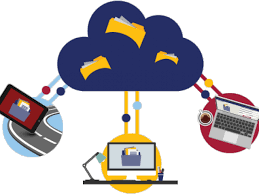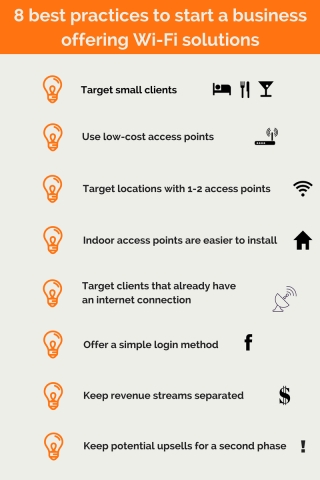Logical access control is a crucial aspect of modern security systems that plays a vital role in safeguarding sensitive information and digital assets within organizations. Unlike physical access control, which focuses on restricting entry to physical spaces, logical access control is concerned with managing and regulating access to digital resources such as data, networks, and software applications.
One of the primary objectives of logical access control is to ensure that only authorized individuals are granted access to specific digital assets based on their roles and permissions. This helps prevent unauthorized users from compromising confidential information or carrying out malicious activities within the organization’s IT infrastructure.
Implementing logical access control involves utilizing various authentication mechanisms such as passwords, biometric verification, smart cards, tokens, and multi-factor authentication to verify the identity of users seeking access to digital resources. Additionally, role-based access control (RBAC) and attribute-based access control (ABAC) are commonly employed to assign appropriate levels of access rights to individuals based on their job responsibilities and qualifications.
By enforcing logical access control measures, organizations can enhance data security, mitigate the risk of insider threats, comply with regulatory requirements such as GDPR and HIPAA, and maintain the integrity and confidentiality of their digital assets. Furthermore, implementing robust audit trails and monitoring systems enables organizations to track user activities, detect suspicious behavior, and respond promptly to potential security incidents.
In conclusion, logical access control is an essential component of comprehensive cybersecurity strategies that help organizations protect their critical information assets from unauthorized access and cyber threats. By adopting best practices in logical access control implementation and regularly updating security policies and procedures, organizations can strengthen their defense mechanisms against evolving cyber threats in today’s digital landscape.
6 Essential Tips for Strengthening Logical Access Control
- Implement role-based access control to assign permissions based on user roles.
- Use strong authentication methods such as multi-factor authentication to verify user identities.
- Regularly review and update access controls to ensure they align with current security requirements.
- Limit access privileges to the minimum required for users to perform their job functions (principle of least privilege).
- Monitor and log access activities to detect any unauthorized access attempts or suspicious behavior.
- Provide training to employees on the importance of following access control policies and procedures.
Implement role-based access control to assign permissions based on user roles.
Implementing role-based access control is a highly effective tip for enhancing logical access control within an organization’s security framework. By assigning permissions based on user roles, organizations can ensure that individuals have access only to the resources and information necessary to perform their job responsibilities. This approach not only simplifies access management but also reduces the risk of unauthorized users gaining entry to sensitive data or systems. Role-based access control helps streamline security administration, enforce least privilege principles, and maintain a granular level of control over user permissions, thereby strengthening overall cybersecurity posture and safeguarding critical digital assets.
Use strong authentication methods such as multi-factor authentication to verify user identities.
Employing strong authentication methods like multi-factor authentication is a recommended practice in ensuring robust logical access control. By requiring users to provide multiple forms of verification, such as passwords, biometrics, or security tokens, organizations can significantly enhance the security of their digital assets. Multi-factor authentication adds an extra layer of protection against unauthorized access attempts, reducing the risk of data breaches and unauthorized activities within the organization’s IT environment. Implementing this measure helps verify user identities more effectively, thereby bolstering overall cybersecurity defenses and safeguarding sensitive information from potential threats.
Regularly review and update access controls to ensure they align with current security requirements.
Regularly reviewing and updating access controls is a crucial tip in maintaining effective logical access control within an organization. By periodically assessing and adjusting access permissions, organizations can ensure that they align with current security requirements and reflect any changes in personnel roles or data sensitivity levels. This proactive approach helps prevent unauthorized access to sensitive information, reduces the risk of security breaches, and enhances overall data protection measures. By staying vigilant and keeping access controls up-to-date, organizations can strengthen their cybersecurity posture and better safeguard their digital assets against potential threats.
Limit access privileges to the minimum required for users to perform their job functions (principle of least privilege).
Limiting access privileges to the minimum required for users to perform their job functions, also known as the principle of least privilege, is a fundamental tip in logical access control. By adhering to this principle, organizations can significantly reduce the risk of unauthorized access and potential security breaches. By granting users only the necessary permissions and privileges needed to carry out their specific tasks, organizations can minimize the likelihood of accidental data exposure or intentional misuse of sensitive information. This proactive approach not only enhances data security but also helps organizations maintain better control over their digital assets and mitigate the impact of insider threats.
Monitor and log access activities to detect any unauthorized access attempts or suspicious behavior.
Monitoring and logging access activities is a crucial tip in ensuring effective logical access control. By keeping a close eye on user interactions with digital resources and maintaining detailed logs of access attempts, organizations can quickly identify any unauthorized access attempts or suspicious behavior. Regularly reviewing these logs allows security teams to detect anomalies, investigate potential security incidents, and take timely action to prevent data breaches or unauthorized activities within the IT environment. Implementing robust monitoring and logging mechanisms enhances the overall security posture of an organization and strengthens its ability to respond proactively to emerging cybersecurity threats.
Provide training to employees on the importance of following access control policies and procedures.
Providing training to employees on the importance of following access control policies and procedures is essential for maintaining a secure and compliant work environment. By educating staff members about the significance of adhering to access control protocols, organizations can enhance awareness about cybersecurity risks, promote a culture of security consciousness, and empower employees to play an active role in safeguarding sensitive information. Training sessions can cover topics such as password management best practices, recognizing phishing attempts, understanding data classification levels, and reporting security incidents promptly. Ultimately, investing in employee training on access control policies can significantly contribute to strengthening the overall security posture of the organization and reducing the likelihood of data breaches or unauthorized access incidents.




